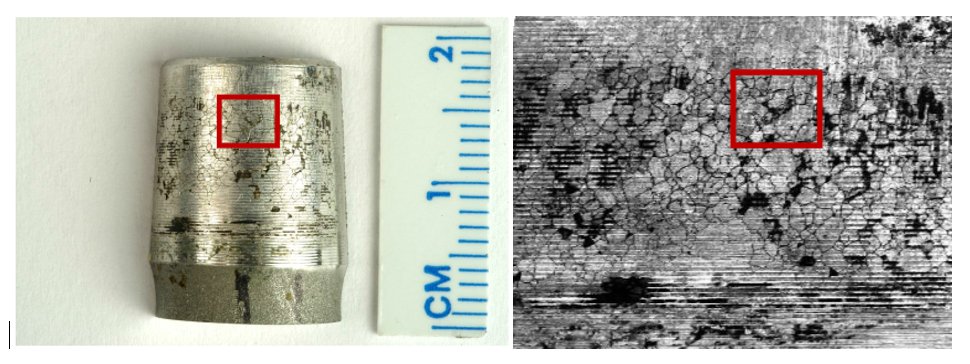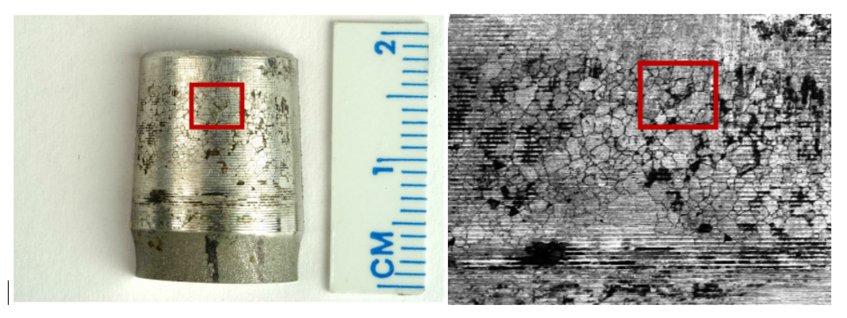Corrosion of CoCrMo hip implant in-vivo
Failed/incomplete solutionization treatments can lead to the inhomogenous distribution of grain boundary and intra-granular carbide phases in an alloy, which can act as initiation sites for corrosion. The composition of such phases in CoCrMo hip implant retrievals and their role during corrosion inside the human body in unknown.
ASTM requirements for CoCrMo-C cast alloys to be used as surgical implants only propose compositional limits and mechanical properties for the alloys. Using static immersion and transpassive corrosion tests of CoCrMo total hip replacement retrievals with comparable carbon content but different carbide distributions, we identify the influence of microstructure on the release of metal ions from the alloy under different electrochemical conditions. Implant retrieval samples are obtained in collaboration with the group of Dr. Robin Pourzal at the Rush University Medical Center, Chicago.

